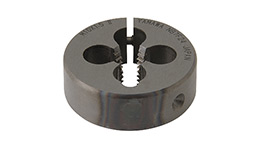
Dec . 30, 2024 07:29
Back to list
Gas Coalescer Technology for Enhanced Separation and Filtration Efficiency
Gas Coalescer A Key Component in Gas Processing Systems
Gas processing is a crucial aspect of various industries, especially those involved in oil and gas production, chemical manufacturing, and energy generation. Within these processes, the purity and quality of the gas play an essential role in ensuring operational efficiency and meeting regulated standards. One critical component that aids in achieving high gas quality is the gas coalescer.
A gas coalescer is a filtration device designed to separate liquid contaminants from gaseous streams. In many industrial applications, gases often carry small quantities of liquid, which can originate from various sources, such as condensation due to temperature fluctuations, high humidity conditions, or impurities introduced during processing. This unwanted liquid can cause several issues, including corrosion of equipment, reduced efficiency, and contamination of end products. Therefore, effective separation of these liquid contaminants is vital.
The coalescing process involves two fundamental principles coalescence and filtration. Coalescence is the process where smaller droplets of liquid merge to form larger droplets. This occurs when the gas stream passes through special filter media that enhances the growth of these droplets. Once the droplets reach a certain size, they become heavy enough to be separated from the gas stream due to gravity. The filter media plays a crucial role in this process, as its surface properties and design influence the efficiency of coalescence.
There are typically two types of gas coalescers mechanical and hydrophobic. Mechanical coalescers utilize physical barriers (filter elements) to capture and merge liquid droplets effectively. These elements can be made from various types of materials, including glass fiber, polypropylene, or stainless steel mesh, depending on the specific application requirements. Hydrophobic coalescers, on the other hand, are designed with a surface that repels water, allowing only gas to pass through while retaining liquid contaminants. This design feature is particularly effective in ensuring that the gas remaining after processing is dry and clean.
gas coalescer

The placement of a gas coalescer within a processing system is critical to its performance. Typically, these devices are installed upstream of process equipment such as compressors, turbines, or heat exchangers. By removing liquid contaminants before they reach sensitive equipment, gas coalescers help prolong the life of these systems and ensure they operate at peak performance. Additionally, they assist in preventing operational issues such as liquid carryover, which can lead to expensive downtime and maintenance procedures.
Moreover, the importance of gas coalescers extends beyond just maintaining equipment health. In many industries, regulatory compliance for gas emissions and purity standards is paramount. Contaminated gas can lead to non-compliance with environmental regulations, resulting in significant fines or operational penalties. By employing effective gas coalescing technology, companies can ensure that their gas emissions meet governmental and industry standards, thus avoiding potential legal repercussions and enhancing their reputation.
Regular maintenance and monitoring of gas coalescers are essential to ensure optimal performance. Over time, filter elements can become saturated or clogged with contaminants, reducing their efficiency. Implementing regular inspection schedules can help identify when filters need replacement or cleaning, thus maintaining the effectiveness of the coalescing process.
In conclusion, gas coalescers are integral components in the gas processing industry. By effectively separating liquid contaminants from gas streams, they help enhance equipment reliability, improve operational efficiency, and ensure compliance with environmental regulations. As industries continue to evolve and the demand for cleaner and more efficient gas processing solutions grows, gas coalescers will play an even more critical role in shaping the future of energy and chemical production. Whether in oil refineries, natural gas processing plants, or chemical manufacturing facilities, the significance of gas coalescers cannot be overstated. They are a vital link in the chain of processes that ensure the quality, safety, and sustainability of gas usage in diverse applications.
Next:
Latest news
-
Safety Valve Spring-Loaded Design Overpressure ProtectionNewsJul.25,2025
-
Precision Voltage Regulator AC5 Accuracy Grade PerformanceNewsJul.25,2025
-
Natural Gas Pressure Regulating Skid Industrial Pipeline ApplicationsNewsJul.25,2025
-
Natural Gas Filter Stainless Steel Mesh Element DesignNewsJul.25,2025
-
Gas Pressure Regulator Valve Direct-Acting Spring-Loaded DesignNewsJul.25,2025
-
Decompression Equipment Multi-Stage Heat Exchange System DesignNewsJul.25,2025

